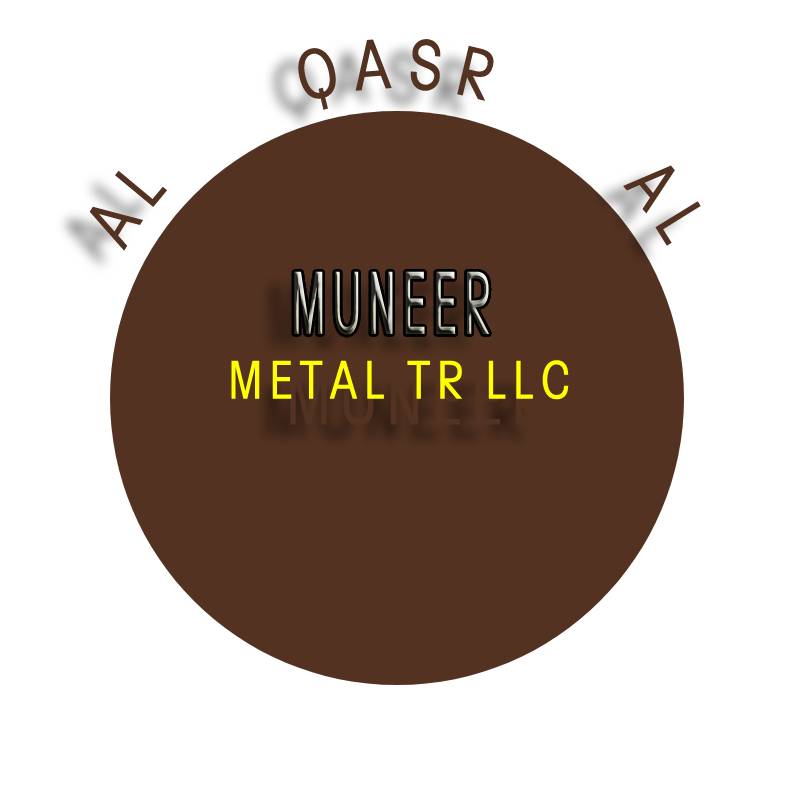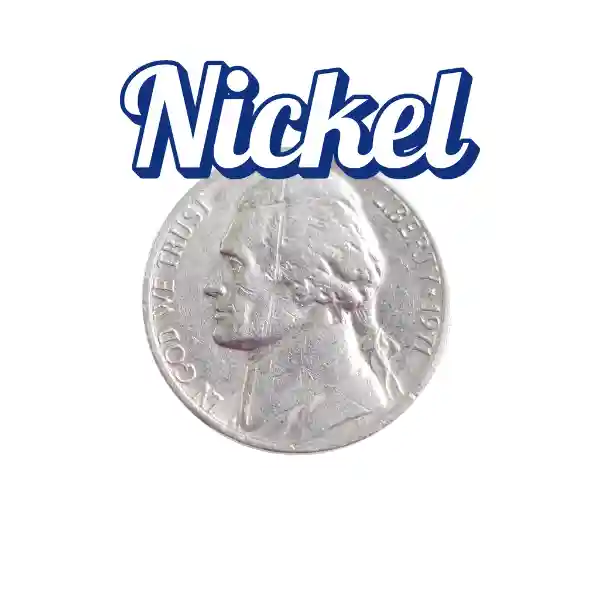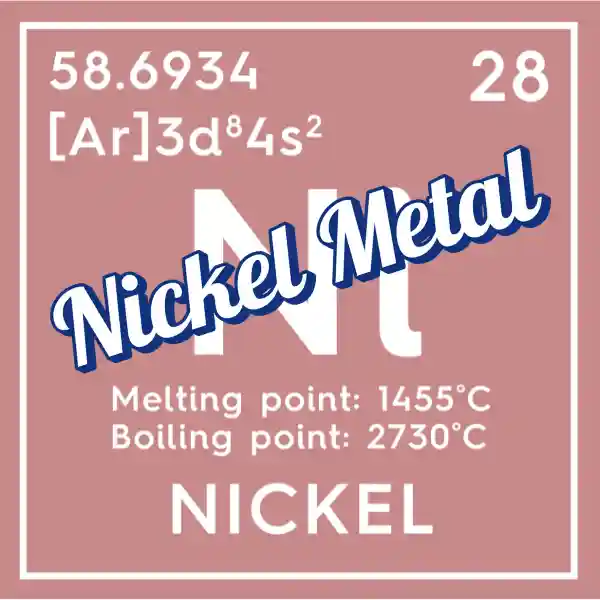Nickel Metal Scrap
Its a naturally occurring metallic element, holds a unique position among industrial metals due to its strength, resilience, and adaptability. Recognized by the symbol “Ni” on the periodic table and bearing the atomic number 28, nickel is found in the earth’s crust and has a long history of human use.
From ancient times to the era of electric vehicles and renewable energy, silvery white metal has proven to be an essential material in both daily life and advanced technologies.
Definition
It is a silvery-white, lustrous metal with a slight golden tinge. It is a hard, ductile, and corrosion-resistant metal that belongs to the transition metals group. With the atomic number 28 and symbol Ni, and is widely used in industrial applications due to its strength, resistance to oxidation, and ability to form alloys.
Origin and Natural Presence
It was first isolated and identified as a distinct metal in the 18th century, although its compounds had been used unknowingly for centuries.
The name “nickel” comes from the German word “kupfernickel,” which roughly translates to “devil’s copper” or “false copper.” Miners used this term after discovering a reddish ore that looked like copper but yielded no copper when processed. Instead, the ore contained a different element altogether — nickel.
In nature, silvery metal white is typically found in two main types of mineral deposits: laterites and sulfide ores. Laterite deposits are located near the earth’s surface in tropical regions, while sulfide deposits are deeper underground and are more common in cooler climates.
Large producing countries include Indonesia, the Philippines, Russia, Canada, and Australia, with significant industrial infrastructure dedicated to mining and refining it for various applications.
Where is this metal Found?
This silvery metal is primarily extracted from two types of ores:
- Laterite Ores – Found in tropical regions such as Indonesia, the Philippines, and New Caledonia.
- Sulfide Ores – Mined in Canada, Russia, and Australia.
Major Producers Countries include:
- Indonesia (largest producer)
- Philippines
- Russia
- Canada
- Australia
The silvery metal is also found in meteorites and deep-sea nodules but is rarely mined from these sources due to economic constraints.
Common usages
It has a wide range of applications in various industries:
- Stainless Steel Production – Over 65% of it is used in stainless steel manufacturing to enhance strength and corrosion resistance.
- Batteries – It is a key component in lithium-ion and nickel-metal hydride (NiMH) batteries used in electric vehicles (EVs) and electronics.
- Aerospace and Military Equipment – Used in superalloys for aircraft engines and defense applications.
- Coins and Currency – This is also used in many coins, including US nickels and European coins.
- Electronics and Plating – Used in plating metals for corrosion resistance and in electronics for conductivity.
Scrap and Recycling Process
The recycling for this silvery metal is crucial for environmental sustainability and resource conservation. The recycling process involves:
- Collection & Sorting – The scrap is collected from industrial waste, used batteries, stainless steel products, and end-of-life equipment.
- Shredding & Separation – Scrap is shredded into smaller pieces, and impurities like iron and non-metallic elements are removed.
- Melting & Refining – The purified scrap is melted and refined in furnaces to remove contaminants.
- Alloying & Reprocessing – The refined silvery metal is used to produce stainless steel, new batteries, and other industrial materials.
Nickel Waste Prices in the UAE
As of today, the price of nickel scrap per kilogram in the UAE (AED) is approximately between 6 – 8 AED/kg, depending on the quality and purity of the scrap nickel, as well as the current market fluctuations.
Recycling this reduces the need for mining, lowers greenhouse gas emissions, and saves energy, making it an environmentally friendly process.
Physical and Chemical Characteristics
Its a transition metal with several unique physical and chemical properties that make it valuable across multiple industries. It is silvery-white in color, hard, and malleable, which means it can be shaped without breaking. It also resists corrosion and oxidation, even at high temperatures, which is why it’s frequently used in environments exposed to air, moisture, and heat.
One of the most interesting aspects of silvery white metal is its magnetic behavior. It is ferromagnetic, meaning it can be magnetized, and it retains its magnetic properties at room temperature.
This trait is shared with only a few other elements, such as iron and cobalt. Its durability, combined with its resistance to wear and rust, explains why it’s often used in alloy form — blended with other metals — to enhance the strength and longevity of different materials.
Chemically, this silvery metal has a stable structure that allows it to bond with a wide variety of elements, particularly iron, chromium, and copper. This versatility in bonding and alloy formation is a key reason for its widespread industrial use.
Examples in Everyday Life
Although we may not always realize it, it plays an integral part in our everyday surroundings. One of the most familiar uses of silvery metal is in stainless steel. This metal contributes to the strength, sheen, and anti-corrosive nature of stainless steel, which is found in kitchen utensils, cutlery, sinks, and even building facades. Without nickel, these objects would be more prone to rust and wear.
It also appears in many household appliances and tools. From toasters and washing machines to mobile phones and remote controls, small amounts of it are often embedded in components to ensure reliability and durability.
In electronics, its used for plating surfaces and producing corrosion-resistant connections, which are essential in maintaining the performance of electronic circuits over time.
Additionally, this white metal is crucial in coinage. While modern coins may not be made entirely of nickel, the metal is often used in alloys to create coins that are both durable and resistant to tarnishing. For example, many coins around the world feature a blend of it and copper, allowing them to withstand years of use without significant wear.
In recent years, its role in battery technology has become increasingly prominent. Rechargeable batteries, especially those used in electric vehicles and power storage systems, rely heavily on on silvery metal for their energy density and efficiency. This growing demand has elevated nickel’s status from a traditional industrial metal to a central component of the green energy revolution.
Given its high industrial value and durability, its is also a sought-after material in the scrap industry. Unlike materials that degrade significantly over time, this metal retains its core properties even after extended use. This means that nickel-containing products, once discarded, can be processed and reused without a substantial loss in quality.
In scrap yards and recycling centers, this is most commonly recovered from stainless steel, batteries, and old electronic equipment. Stainless steel grades such as 304 and 316 are particularly valuable because they contain significant amount of it.
These alloys are melted down, refined, and reintroduced into manufacturing, reducing the need for freshly mined nickel and helping preserve natural resources.
The recycling of this white scrap is both environmentally beneficial and economically profitable. The energy required to recycle this silvery white scrap is far less than that needed for mining and refining it from raw ore. Moreover, because its price is relatively high and fluctuate based on global demand
Particularly from the electric vehicle and construction sectors — recycling offers a stable and sustainable source of this critical metal. In the United Arab Emirates, where the scrap and recycling industry is growing, nickel plays a vital role. With increasing infrastructure development and technology adoption, the demand for stainless steel and battery materials is rising.
Scrap dealers and recycling companies in the UAE actively buy and sell nickel-containing scrap, contributing to a circular economy and helping meet local and international supply needs.
Conclusion
This silvery white metal is much more than just a shiny metal. Its strength, resistance to corrosion, and ability to combine with other metals have made it indispensable in industries ranging from kitchenware to aerospace and renewable energy. Found deep within the earth’s crust and extracted with advanced mining techniques,
Nickel travels a long path before becoming part of our daily lives — as part of the coins in our pockets, the appliances in our homes, and the batteries powering the cars of the future.
Its presence in the scrap industry highlights not only its value but also its resilience and recyclability. Whether mined or recycled, nickel remains a cornerstone of modern industry and an unsung hero of technological progress.




